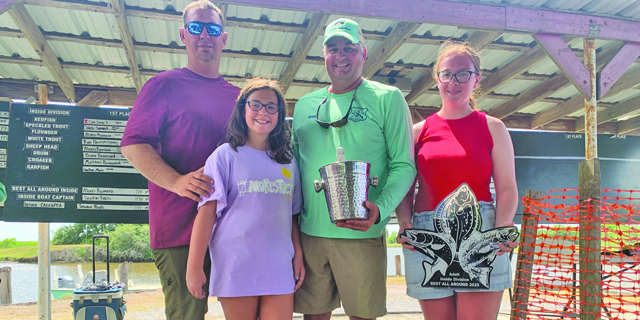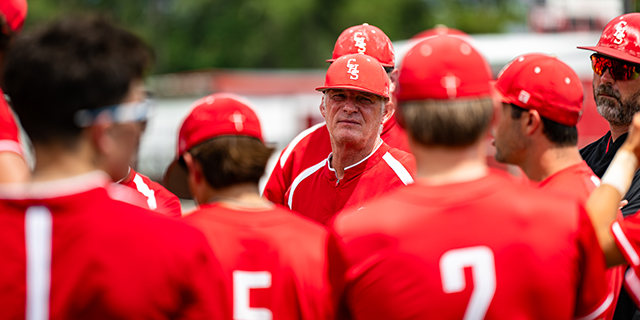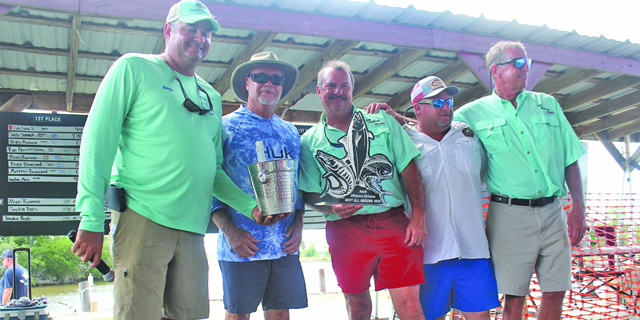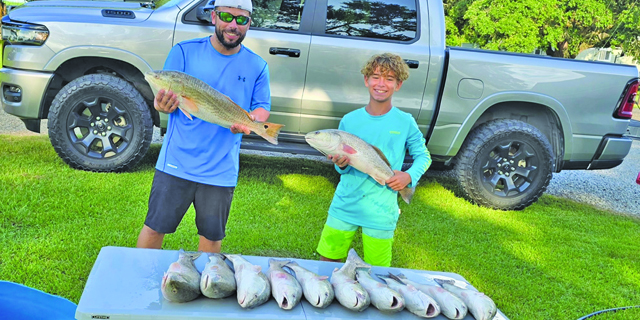Spillway opening threatens wildlife
Published 6:30 am Sunday, June 2, 2019
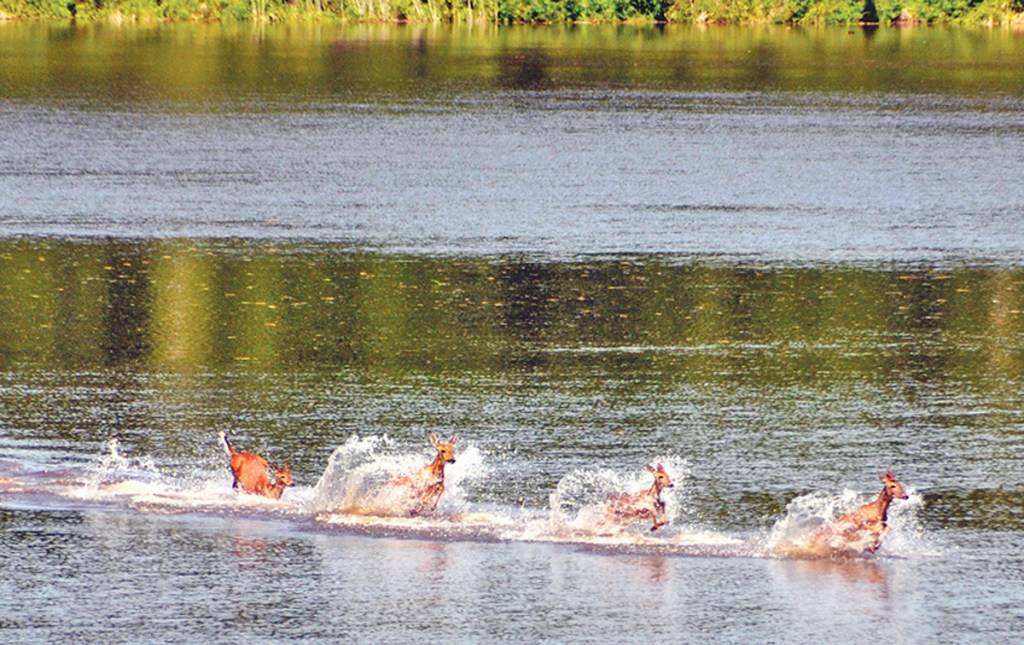
- White-tailed deer run across a shallow area on May 18, 2011, in the flooded Atchafalaya Basin. They were escaping floodwaters released when the Morganza Spillway gates were opened in mid-May. Biologists estimated 1,600 deer died during that 55-day period in 2011. LDWF Enforcement Division agents who took the photo said these deer survived.
LAFAYETTE — Tony Vidrine has seen the flooding and loss of wildlife before and never wanted to see it again.
Trending
“In 2011 we said, ‘I hope we never have to do it again.’ Here we are, a few years later …,” Vidrine said Wednesday morning from his Lafayette office, where he works as the state Department of Wildlife and Fisheries’ Lafayette Region Wildlife Division Manager.
The 35-year veteran game biologist was talking about the opening of the Morganza Spillway in mid-May 2011. A few years later, eight years, to be exact, the U.S. Army Corps of Engineers plans to open the Morganza Spillway on Thursday for only the third time since 1973.
Federal and state officials decided early this past week to open the Morganza Spillway. Mississippi Valley Division Commander Maj. Gen. Richard Kaiser made the final decision, taking into consideration record-breaking flooding in the Midwest.
The Atchafalaya River stage at Butte La Rose is expected to rise 1 to 3 feet. As of Saturday morning, the BLR river stage was just under 20.0 feet, which is minor flood stage.
Originally, the first gate was scheduled to be opened today because forecasts used at the time showed the Mississippi River would top the spillway at Red River Landing in Point Coupee Parish on Wednesday, in all probability causing the spillway to fail.
A revised forecast showed the Mississippi River threat to the spillway won’t happen until June 9. There is the possibility Thursday’s opening could be delayed or, even, canceled.
Trending
“We will continue to monitor the forecasts,” U.S. Army Corps of Engineers spokesman Ricky Boyett said Thursday.
Opening the gates will send thousands of gallons of water into the Atchafalaya Basin, including two popular Wildlife Management Areas — Sherburne WMA and Attakapas WMA in the Teche Area. The latter, most of it, has been underwater for several months unlike the Sherburne WMA, located above Interstate 10 in St. Martin, Pointe Coupee and Iberville parishes.
Like the last time and the time before that, it will take a direct and devastating hit from the extra water.
“You’re putting anywhere from 7 to 10 feet on there (Sherburne WMA). There will not be much high ground left. It will have an impact on wildlife, more so on Sherburne than Attakapas,” Vidrine said.
“It affects everything. Deer. Bears. Turkeys. All other wildlife, like rabbits and raccoons. We’re definitely going to lose some animals,” he said, adults and otherwise, noting bear cubs, turkey poults and fawns are on the ground now, vulnerable to flooding.
In 2011, 1,600 deer died in the manmade flood, including 30 percent of the population unable to escape to high ground at Sherburne WMA. Eighty percent of the turkey population there succumbed to the high water and never recovered fully.
“I don’t see anything good happening for turkeys this time around,” Vidrine said.
Officials did learn a lesson from the opening in 2011. The Morganza Spillway’s gates were opened all at once and, according to a Corps official, the first day “was pretty violent.” Water rose quickly, giving terrestrial animals less time to escape.
This time around, Vidrine said, officials plan to open 20 to 25 of the 125 bays but not all at once. Perhaps a saving grace for animals on the ground, the opening will happen incrementally, with one gate being opened each of the first three days, so the Basin fills slowly, giving wildlife a better chance to escape, followed by more openings, possibly at a faster rate.
How much water will flow through those gates? The first day of operations is expected to release 9,000 cubic feet of water per second. Once regular operations are underway, it will jump to 150,000 cfs, which still is much less than the 600,000 cfs the Morganza Spillway can release at full capacity.
During the first three days, water will rise 1 foot a day across a 112-square mile floodway to let wildlife escape. After that, the amount of water released is enough to fill the Boston Aquarium’s biggest tank 5 ½ times every second.
“Deer on the east side of Sherburne, a lot of deer go outside the protection levee, you know, there’s a treeline along the borrow pits, and also in the fields outside the levee,” Vidrine said, recalling what happened in 2011. “On the west side, the main side of Sherburne, a lot of deer were on the batture side that helps a little bit.”
Deer in the interior were less likely to survive, he said.
Naturally, more deer and other wildlife will be seen by people. As animals are displaced, the state agency’s biggest concern is the potential risk of wildlife wandering onto highways or levees, interacting with people and cars while escaping to unfamiliar territory.
“We encourage people to stay away from the levee, stay off the roads. When they see critters, recognize they are trying to find a safe place. Back off and let them be,” Wildlife Division administrator Kenny Ribbeck said recently.
Occasionally, Ribbeck said, animals will run back into the high water to avoid humans.
Vidrine and other biologists have their work cut out for them after the high-water episode, one expected to last at least several weeks, most probably through late June, according to Heath Jones, chief emergency officer for the Corps. An assessment will be made for all of the affected region, particularly the WMAs.
“We’ll have to take a look at it once it’s all over, once the water recedes,” Vidrine said.
“I imagine we’ll do some adjustment to the hunting season at Sherburn” and other areas inside the Atchafalaya Basin, he said.
“So we’ll adjust the seasons and hopefully recover.”
He noted that casualties such as those anticipated are similar to the harvest during a hunting season.
Another decimated turkey population is painful to think about for biologists.
“I don’t know what to do about turkeys. We have so few left,” he said.


